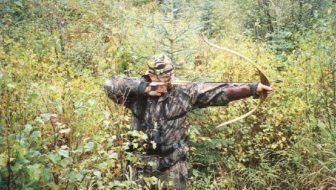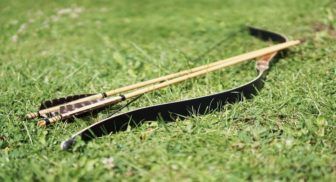How to String a Recurve Bow
If you're into recurve bows, then knowing how to string your bow is a necessary skill. The recurve bow needs stringing and unstringing for storage and transport, to preserve and prolong the life of the bow and its bowstring.
Stringing a recurve bow is easy if you use the right tool and know what to do. Following is an easy 6-step guide on how to string your recurve bow.
First Things First
Recurve bows produce lots of force, so the stringing process is potentially dangerous. You can get injured if you're not careful or if you're not using the right equipment.
So, make sure you've got a good stringer that's designed for a recurve bow and not a longbow . Also, make sure it's designed to match your bow's strength and length. If everything checks out, then move on with the following step by step guide.
Step 1: Attach the Bowstring
Your first step is to attach the bowstring to the limbs of your recurve bow. The bowstring will have 2 loops, a larger and a smaller one. You'll first slide the larger loop into the upper limb and leave it loose to slide up and down.
The smaller loop goes into the notch on the lower limb, which is the heavier limb and usually has the bow's draw weight on it. This smaller loop should fit snuggly into this notch, unlike the larger loop which has to stay loose.
With the small loop in the lower limb's notch, you'll find that the bowstring itself is too short for the larger loop to fit into the upper limb's notch. The bow's limbs will need to curve before they can fit.
Step 2: Attach the Large Pocket
The stringer is just a string with leather attachments on each end. You can either get a double pocket stringer with a leather pocket on each end or a pocket and saddle stringer with a pocket on one end and a saddle on the other.
If you are using a double pocket stringer, attach the larger pocket to the lower limb and let it completely cover and hold the small loop in the limb's notch.
If you're using a pocket and saddle stringer, it's the pocket that you'll have to attach to the lower limb and let it hold the small loop in place. Feel free to use a rubber band to hold it tight, if you need to.
Step 3: Attach the Small Pocket
In step 3, it's time to attach the small pocket or saddle to the upper limb. With the small pocket, you'll just have to fit it on the tip of the upper limb, while making sure it doesn't fall out.
If it's a pocket and saddle stringer, then you'll need to place the saddle end of the stringer over the limb and just behind the string loop, lying flat on its face.
Step 4: Hold the Bow Horizontally
In this step, you'll need to hold the bow horizontally in front of you, with the tips of the limbs facing upwards and the bowstring and stringer both suspended downwards.
The stringer should suspend lower than the bowstring so that if you slowly lower the arrow, it's the stringer that'll first touch the floor. Once it touches, you can step on it with any foot you like.
This is the position in which you'll pull the bow and fix the second loop into the upper limb's notch, so you need to make sure you're comfortable and well-balanced before proceeding.
Step 5: Pull Up & Slide
With one or two feet holding down the stringer, slowly lift the bow, while making sure it remains generally horizontal and that the pockets remain attached to the tips of the limbs.
As you continue to lift the bow, its length will shorten and the larger loop will slowly reach the upper limb's notch. Continue to slide this larger loop towards the tip of the limb until you can secure it into place in the notch.
Once it's in place and you're sure it sits nicely, begin to slowly lower the bow so that the tension slowly changes from the stringer into the bowstring.
Once complete, you are now free to remove the pockets from each tip of the limbs and your recurve bow has been strung.
Step 6: Inspection
Before you begin to use the bow, it's necessary that you inspect it properly to make sure that everything sits properly. Remember to work carefully and keep your head back while carrying out your inspection to prevent any possible injuries.
If there are no mistakes and everything went fine, then you're free to start shooting with it.
How to Unstring Your Recurve Bow
Having learned how to easily string your bow, you can also unstring it easily as well. To unstring your recurve bow, attach the bow stringer to the bow as you did when stringing it.
Step on the stringer and start pulling the bow up, and once you've pulled it up enough, slide the larger loop off from the upper limb's notch and back down along the limb. Gently pull down, relax the bow, and that's it.
Conclusion
You can see that it's easy to string and unstring a recurve bow. You just need to have the right bow stringer for your recurve bow and follow these step by step instructions to get it right every time.
Image credit: archery360.com

